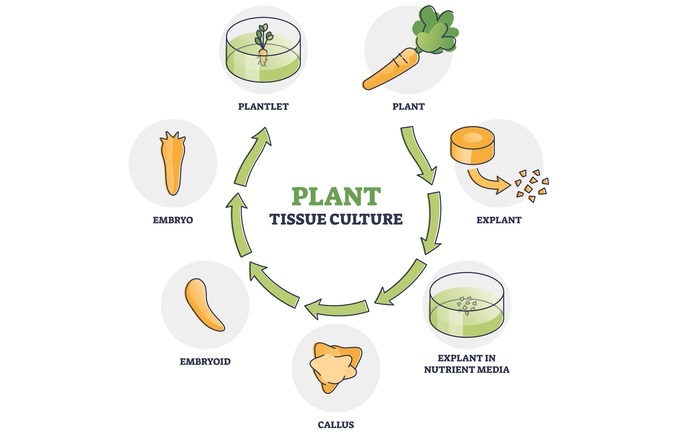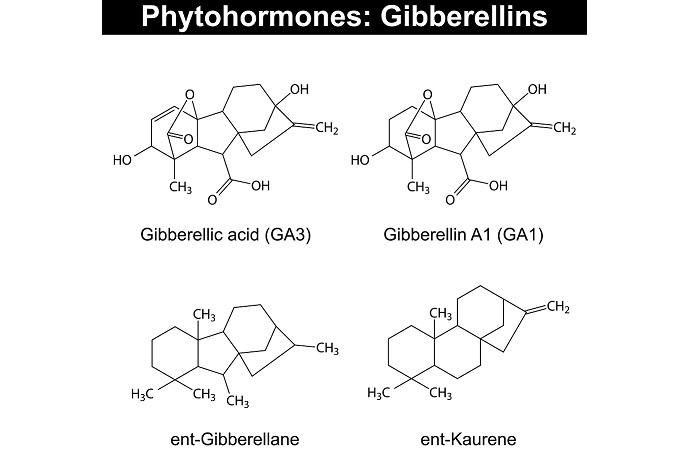
 Data Structure
Data Structure Networking
Networking RDBMS
RDBMS Operating System
Operating System Java
Java MS Excel
MS Excel iOS
iOS HTML
HTML CSS
CSS Android
Android Python
Python C Programming
C Programming C++
C++ C#
C# MongoDB
MongoDB MySQL
MySQL Javascript
Javascript PHP
PHP
- Selected Reading
- UPSC IAS Exams Notes
- Developer's Best Practices
- Questions and Answers
- Effective Resume Writing
- HR Interview Questions
- Computer Glossary
- Who is Who
What is Organogenesis?
Organogenesis
Organogenesis is the process through which plant organs i.e., shoots, flowers, and roots form from either an ex-plant or a callus of culture.
A fully grown plant is made up of organs that are each specialized for a certain task, such as roots for taking nutrients and water from the soil, leaves for photosynthesis, and flowers for reproduction. These organs comprise tissues like the meristem, cortex, phloem, and epidermis. Organogenesis is the process by which various organs develop and begin.
Introduction
The growth of plant parts like the root system, flowers, and shoot system is carried out by meristematic cells. Organs above the root, later organs, are produced or developed by the shoot apical meristem. Organs that were regenerated from the shoot apical meristem, such as leaves, stems, buds, and flowers, have the ability to organogenesis. As these cells are stimulated in-vitro, a completely new plant emerges. The term organogenesis refers to the entire process.

Skoog (1944) demonstrated how chemical additives in medium can control the organogenesis process. In his research, he discovered that adding auxin to the media stimulates the development of the root while suppressing the development of the shoot. Conversely, he discovered that the creation of the shoot is encouraged by raising the medium's concentration of sucrose and inorganic phosphate. He deduced from his observations and those of his colleagues that the ratio of auxin to cytokinin regulates the process at greater auxin concentrations, the development of the root is seen.
Organogenesis Can Occur in Three Different Ways:
From an explant.
From the callus culture.
From the axillary buds.
Dedifferentiation and redifferentiation are the first two phases in the organogenesis process.
Dedifferentiation: It causes the explant tissue to produce a callus with rapid cell division. Dedifferentiation starts soon after the explant tissues are isolated, when cell division speeds up and a mass of undifferentiated cells is produced as a result (called callus).

Redifferentiation, on the other hand, results in the formation of primordia from a collection of callus cells. Redifferentiation, also known as budding in plant tissue culture, can start at any point following the formation of the initial callus cell.
In this procedure, a single or a collection of callus cells are differentiated into tissue referred to as organ primordia. Little meristems with cells that are remarkably big in nuclei and densely filled with protoplasm are produced by the organ primordia.
Sometime after the creation of meristem tissues, the polarity of the longitudinal axis of the organising growth sites of the organs can be observed. Specialized cells again develop into several types. The new organs are connected to their parent explants or callus mass by the circulatory system that forms.
Direct Organogenesis
Direct organogenesis is the term used in plant tissue culture to describe the process by which buds and shoots emerge directly from tissue without the requirement for the callus stage.
Cloning occurs when direct organogenesis produces planting material with no genetic variation. The planting material is guaranteed to be uniform. This method is helpful for growing plants that multiply more quickly (the number of plants per explant is higher).
Since it allows for more efficient plant multiplication rates and clone propagation where there is no genetic diversity, direct organogenesis is more of an industrial procedure.
Indirect Organogenesis
Indirect organogenesis is the process by which an organ of a plant develops from the callus of an explant (tissue that developed at the site of a cut or wound). The development of a transgenic plant benefits more from the indirect organogenesis process. With the indirect organogenesis method, a transgenic plant can be created in one of two ways ?
A new transgenic plant is generated using transformed callus.
In order to develop a callus in the shoot, a modified explant is used.
Factors That Affect Organogenesis
External Factors
External factors that affect organogenesis include:
Chemical
Environmental
Chemicals
Auxin and cytokinin, two essential molecules, have a significant impact on the development of plant organs including roots and shoots. Auxin simulates information of the root system and prevents the growth of the shoot, according to experiments and studies cytokinin encourages the growth of the shoot.
Environmental
The surrounds and environment are important in the development of organs. Organogenesis is encouraged by a healthy, nutrient-rich environment, whereas it is inhibited by a hard, challenging environment.
Internal Factors
Internal factors that affect the process include ?
Gibberellin
Carbohydrates
Ethylene
Gibberellin
Gibberellins is a hormone that restricts the formation of shoot and root both. Not only this but also gibberellins lower the content of starch and prohibit bud formation.

Carbohydrates
They serve as an osmotic agent and a source of energy for the respiratory system. The osmoregulatory function can be preserved by partially substituting mannitol for sucrose. The form and growth of calluses are impacted by osmotic stress in cultures.
Ethylene
While ethylene is a hormone that speeds up the process of development at the primordial stage, it inhibits organogenesis.
Conclusion
Organogenesis is the process through which plant organs including shoots, flowers, and roots form from either an ex-plant or a callus of culture. The process of organogenesis is generally necessary for life.
Direct organogenesis and indirect organogenesis are the two forms of organogenesis. The process of organogenesis is influenced by a number of internal and external variables.

